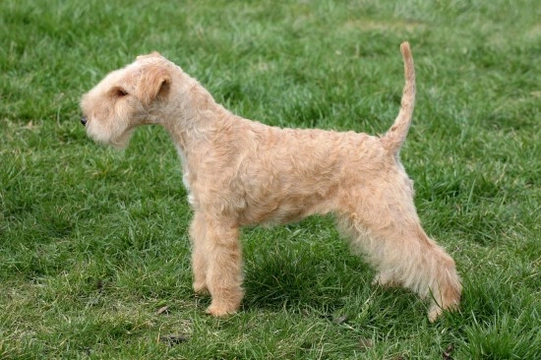
Lakeland terrier hereditary health and longevity
The Lakeland terrier is a small to medium dog breed of the terrier type, which originates from the Lake District area of England, and which was created from the crossing of a fox terrier and an Airedale terrier. A relatively modern dog breed, the Lakeland terrier first came to prominence during the 1920’s, when they received widespread recognition by most of the main breed organisations.
They are similar in appearance to the Welsh terrier, but have a slightly finer bone structure, and are also similar to the Airedale terrier that is their ancestor, only rather smaller. They are compact, sturdy and workmanlike dogs, with a black and tan coat that is low shedding and considered to be less of an allergenic trigger for people with sensitivities than most other dog breeds.
The Lakeland terrier stands between 13-15” tall at the withers, and can weigh up to 8kg. They have small, oval eyes, medium length ears, and relatively short tails that were traditionally docked before this procedure became illegal within the UK. They are reputed to be independent, bold, friendly and inquisitive, and are often a good pick for canine sports such as agility and obedience, as well as also being seen performing in the more specialist earth dog trials that are designed for terrier-type dogs.
If you are wondering if the Lakeland terrier is the right choice of dog for you, in this article we will look into the average longevity and hereditary health of the breed in more detail. Read on to learn more.
Lakeland terrier average longevity
The average lifespan of the Lakeland terrier is 12-16 years, which provides quite a range of variance across the breed as a whole. Towards the lower end of the scale is well in the middle of the average across the board for similar sized breeds, while the top end of the scale is significantly higher than most pedigree dog breeds can hope to attain on average.
Genetic diversity
The coefficient of inbreeding statistic across the Lakeland terrier breed as a whole is 11.7%, which is considered to be rather high. The ideal figure for pedigree dog breeds is below 6.25%, and the figure for the Lakeland terrier indicates that the breed is subjected to a reasonable amount of inbreeding in order to keep the breed viable. Inbreeding may be necessary in some cases in order to produce good quality dogs with desirable traits, but it can also lead to problems such as smaller litter sizes, and shorter than average lifespans.
Lakeland terrier breeders are advised to reduce the coefficient of inbreeding statistic within their own breed lines where possible, in order to ensure the ongoing health of the breed.
Conformation
The shape and build of the Lakeland terrier is considered to be well balanced and fit for life, and not prone to exaggerations or overtyping that may pose a threat to the overall health of the breed.
As the coat of dogs of the breed is very low shedding, owners are advised to groom their dogs regularly, in order to keep their coats in good condition.
Health testing
Unusually for a pedigree dog breed, The Kennel Club and the British Veterinary Association do not advise any specific health schemes or health tests for dogs of the breed, as they are not considered to have a heightened predisposition to hereditary health defects across the breed as a whole.
This reflects the fact that the Lakeland terrier is a healthy, well-formed and fit dog breed, and not one that is prone to suffering from a wide range of health problems.
Health issues
While no pre-breeding screening is advised for the Lakeland terrier, like all dog breeds, the Lakeland has been identified as having a slight hereditary predisposition to certain health issues, for which no pre-breeding screening is currently offered.
Even these conditions are not considered to be widely spread across the Lakeland terrier breed as a whole, but potential Lakeland terrier purchasers are advised to appraise themselves of these conditions before committing to a purchase. Such conditions are:
- Lens luxation, a displacement of the lens of the eyes.
- Cataracts, which may or may not be hereditary. Cataracts tend to present within the breed in later life, and are usually operable in order to save the dog’s vision.
- Persistent pupillary membranes, in which the membranes of the eyes do not retract in the normal manner and can be seen visibly lying across the eyes.
- Microphthalmia, the term used to describe eyes that are abnormally small for the breed.
- Ventricular septal defect, an abnormal formation of the walls between the two chambers of the heart.
- Legg-Calve-Perthes syndrome, a disease of the hip joints that cases degeneration of the femur head, which leads to lameness and severe pain in affected dogs.



